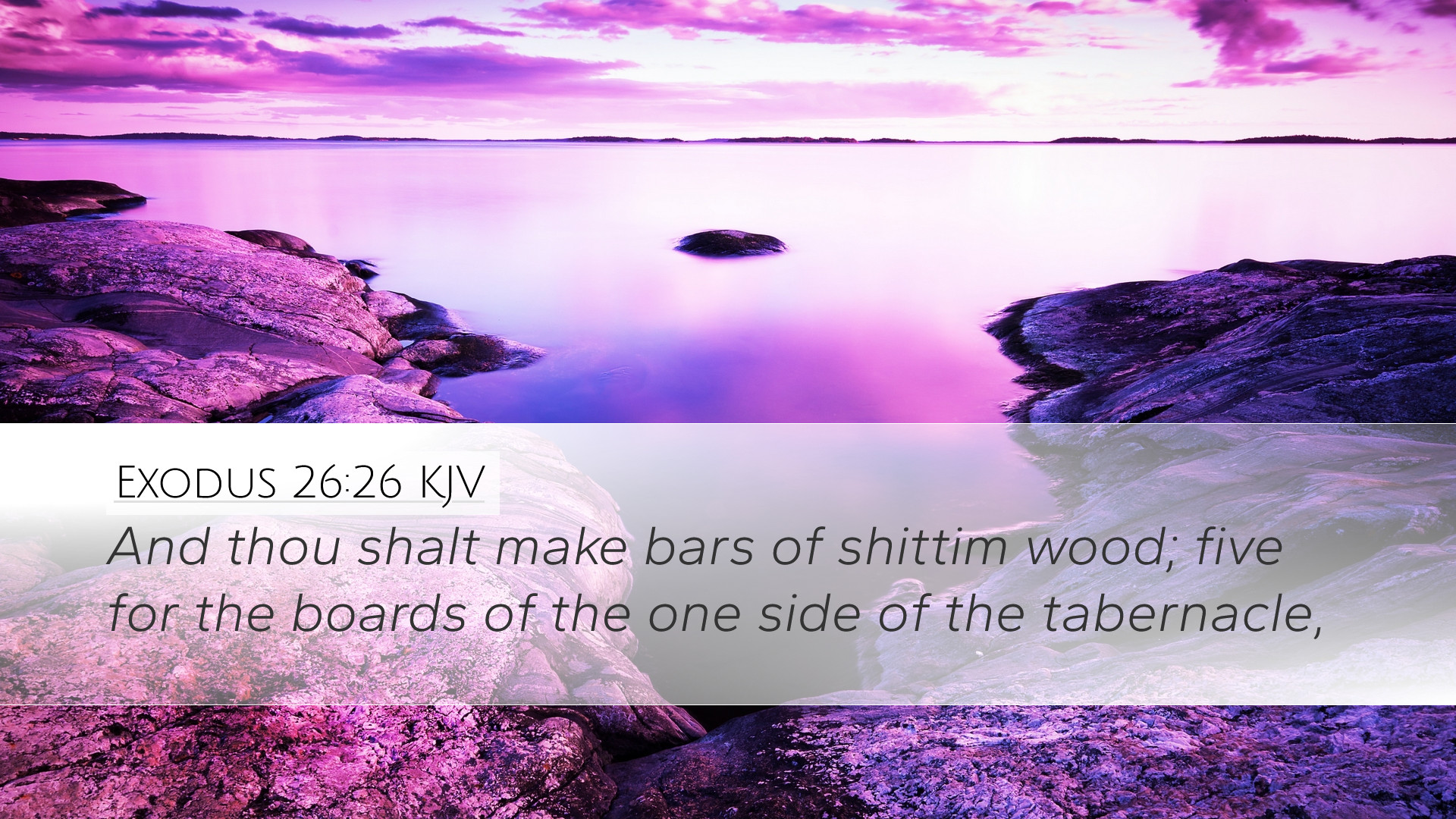Commentary on Exodus 26:26
Exodus 26:26 (KJV): "And thou shalt make bars of shittim wood; five for the boards of the one side of the tabernacle,
This verse falls within the context of the detailed architectural instructions given by God to Moses regarding the construction of the tabernacle. It plays an integral role in understanding the structure and spiritual significance of the tabernacle itself.
Contextual Background
The overall structure of the tabernacle was designed to be a dwelling place for God among His people. The precision in these divine instructions emphasizes the importance of God’s presence and holiness. The bars mentioned in this verse were critical for the stability and unity of the structure.
Insights from Public Domain Commentaries
Matthew Henry's Commentary
Matthew Henry highlights the significance of the shittim wood used for the bars. He notes that this wood is a type of acacia and symbolizes the incorruptible nature of the Divine, paralleling the enduring faithfulness of God. The bars served as a means to unify and support the boards, symbolizing the unity and support within the community of believers.
Henry also emphasizes the arrangement of five bars for one side and their correlation to the structure's strength. The number five can be seen as symbolic of grace or the five-fold ministry in the New Testament, offering a deeper illustrative meaning concerning God's provision and guidance through His appointed leaders.
Albert Barnes' Notes on the Bible
Albert Barnes provides a technical perspective on the construction of the bars. He details that they were inserted into rings attached to the boards, lending stability and structural integrity to the tabernacle. His commentary points out that the design was not random; rather, it was meticulously planned by God.
Barnes suggests that the placement of these bars amidst the boards serves as a reminder of the interconnectedness of God’s people and the necessity for them to be held together in love and duty, much like the bars hold the boards together. This structural analogy calls to mind the latter teaching of the Apostles regarding the unity of the Church, as seen in Ephesians 4:16, which states that all parts of the body work together for its health and growth.
Adam Clarke's Commentary
Adam Clarke expands on the purpose of the bars beyond mere construction. He notes they also symbolize strength and security, ensuring that the tabernacle could withstand the elements and remain intact during travels. A comparison is often made to the way the Church must also remain strong and unified amid challenges.
Clarke comments on the spiritual applications of this verse, suggesting that the bars represent the ministries and spiritual gifts that hold the Church together. Just as the physical structure of the tabernacle relied on its bars, so too does the spiritual body rely on the gifts given to each believer for functioning and growing together in Christ.
Theological Reflections
The instructions for the bars, and their function within the tabernacle structure, serve as metaphors for various aspects of Christian life and church governance. They remind us of the importance of stability, unity, and support systems within our faith communities.
- Unity in Diversity: The five bars symbolize the diverse gifts and functions within the Body of Christ, held together by a common purpose and ultimate goal of glorifying God.
- Strength in Structure: Like the bars that secure the tabernacle, believers are called to support one another, reflecting God's love and grace through actions and relationships.
- Divine Presence: The configuration of the tabernacle serves as a reminder of God's desire to dwell among His people. The symbolism extends to the New Covenant where the Spirit dwells within believers, granting them the ability to be His vessels on earth.
Conclusion
In conclusion, Exodus 26:26 encapsulates significant theological principles through the representation of the bars that hold the tabernacle's structure together. The insights drawn from Matthew Henry, Albert Barnes, and Adam Clarke provide a rich tapestry of understanding that highlights the importance of unity, support, and divine presence emanating from this design.
This verse reminds contemporary readers—be they pastors, students, theologians, or scholars—of the timeless principles of strength, communal ties, and the importance of functional diversity in the fabric of both biblical and modern church life.


